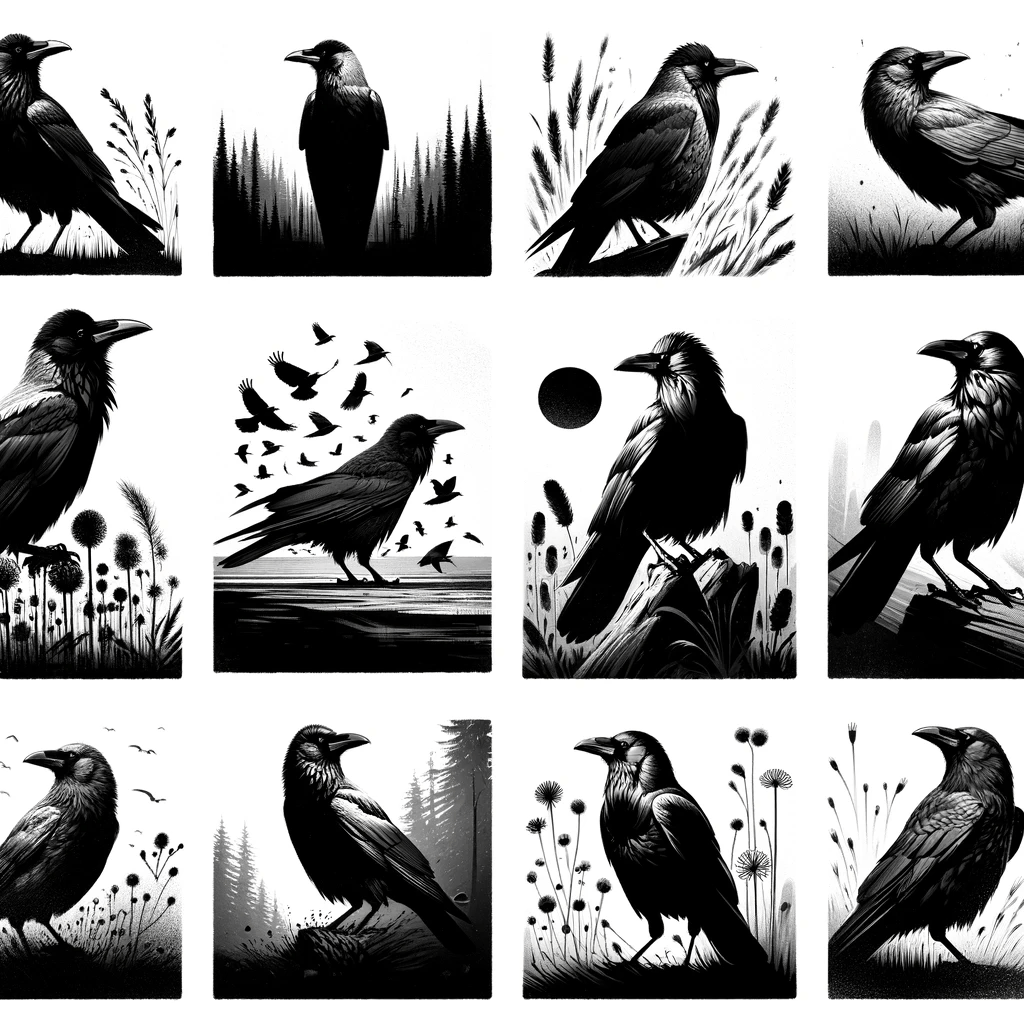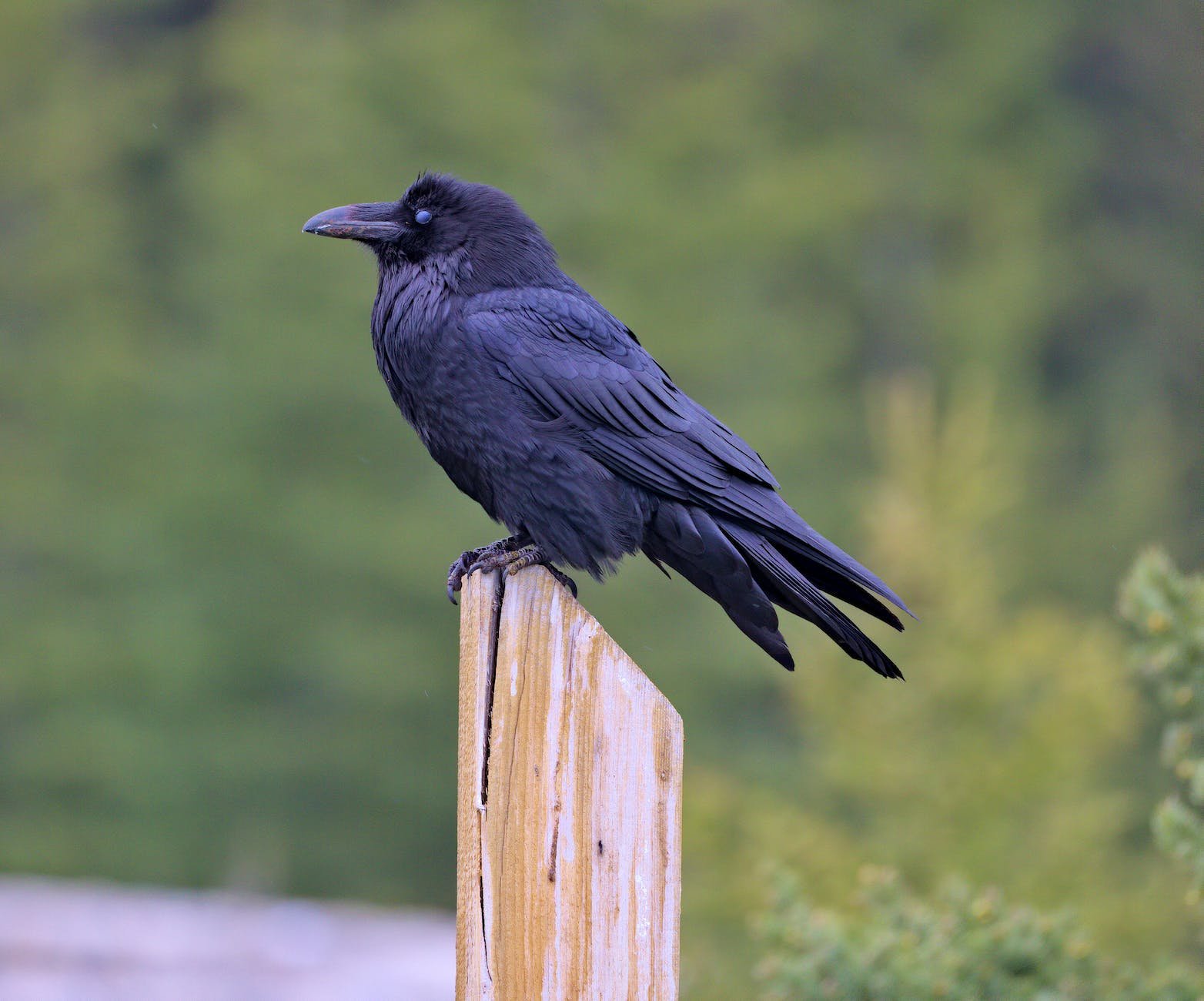Wings of Africa: Unraveling the Secrets of Corvus Capensis Lichtenstein
December 29, 2023 | by BlackCrow.com

The Black Crow: Corvus Capensis Lichtenstein
In the world of avian wonders, the Cape Crow, scientifically known as Corvus Capensis Lichtenstein, stands out as a fascinating species. This black crow, also referred to as the Cape Rook, captivates with its unique characteristics and intriguing behavior.
Introduction to the Cape Crow
The Cape Crow is a member of the Corvidae family, which includes other intelligent and adaptable birds such as the Pied Crow and the White-Necked Raven. This species is native to East and Southern Africa, making its home in various habitats across the region.
Known for its striking black plumage and sleek appearance, the Cape Crow possesses a charm that sets it apart from other corvid species. Its scientific name, Corvus Capensis Lichtenstein, pays homage to its natural habitat in the Cape region of South Africa, where it can be found in abundance.
Physical Characteristics and Distribution
The Cape Crow is characterized by its medium-sized build, measuring approximately 46 to 48 centimeters (18 to 19 inches) in length. Its feathers are predominantly black, with a glossy sheen that adds to its allure. The bill of the Cape Crow is robust and straight, perfectly suited for its feeding habits.
This species is distributed across the eastern and southern parts of Africa, with its range spanning countries such as South Africa, Mozambique, Zimbabwe, and Tanzania. Within this range, the Cape Crow can adapt to various habitats, including woodlands, savannas, and even urban environments.
To learn more about other fascinating members of the corvid family, such as the Pied Crow and the White-Necked Raven, check out our articles on corvus albus müller, pls, 1776 – pied crow (central african coasts to southern africa) and corvus albicollis latham, 1790 – white-necked raven or cape raven (southern, central, and eastern africa).
The Cape Crow, Corvus Capensis Lichtenstein, is truly a remarkable bird. Its physical attributes and distribution make it an intriguing subject for further study and appreciation.
Habitat and Behavior
The natural habitat and behavior of the Cape Crow, scientifically known as Corvus Capensis Lichtenstein, play an important role in understanding this intriguing species.
Natural Habitat of the Cape Crow
The Cape Crow is primarily found in the eastern and southern regions of Africa. Its habitat ranges from savannahs and grasslands to woodlands and coastal areas. These versatile birds have adapted well to various environments and can be observed in both urban and rural settings.
Social Behavior and Feeding Habits
Cape Crows are highly social birds and are often seen in small to large groups, known as flocks. They are known for their intelligent and adaptable nature. These birds have a wide diet that includes both plant and animal matter. They feed on fruits, seeds, insects, small vertebrates, and even scavenged food.
These crows are skillful foragers and are known to use tools to obtain food. They have been observed using sticks, twigs, and even thorns to extract prey from crevices or to access food sources that are otherwise difficult to reach. This ability showcases their problem-solving skills and demonstrates their resourcefulness.
In terms of communication, Cape Crows are highly vocal. They have a wide repertoire of calls, ranging from loud, harsh caws to softer, more melodic sounds. These vocalizations serve various purposes, including territorial defense, flock communication, and signaling of potential food sources.
Understanding the natural habitat and behavior of Cape Crows provides valuable insight into their survival strategies and interaction within their ecosystem. Conservation efforts for this species should take into account their unique characteristics and the threats they face in their environment. To learn more about the conservation status and threats to the Cape Crow population, refer to our article on conservation status and threats.
Unique Features of the Cape Crow
The Cape Crow, scientifically known as Corvus Capensis Lichtenstein, possesses several unique features that set it apart from other bird species. Let’s explore two of these distinctive characteristics: vocalizations and communication, as well as tool use and problem-solving abilities.
Vocalizations and Communication
The Cape Crow is a highly vocal bird, with an impressive repertoire of calls and vocalizations. These calls serve various purposes, including communication within the flock, territorial defense, and warning signals. The Cape Crow’s vocalizations consist of a range of harsh, guttural, and caw-like sounds.
One interesting aspect of the Cape Crow’s vocalizations is its ability to mimic other bird species and even human sounds. This mimicry is thought to play a role in establishing dominance within the flock and attracting potential mates. The ability to imitate other sounds demonstrates the Cape Crow’s intelligence and adaptability in its vocal communication.
Tool Use and Problem-Solving Abilities
The Cape Crow exhibits remarkable tool use and problem-solving abilities. It has been observed using sticks, twigs, and other objects as tools to extract food from crevices or to probe into the ground for insects. This behavior showcases the Cape Crow’s ingenuity and resourcefulness when faced with various feeding challenges.
Furthermore, studies have revealed that the Cape Crow can solve complex problems by using tools in innovative ways. For example, they have been observed bending wire to create hooks to retrieve food from containers. This level of problem-solving demonstrates the Cape Crow’s cognitive abilities and adaptability in finding solutions to obtain food.
The vocalizations, communication skills, and tool use and problem-solving abilities of the Cape Crow highlight its intelligence and adaptability. These unique features contribute to the survival and success of this fascinating bird species. To learn more about other crow species and their characteristics, check out our articles on pied crow and white-necked raven.
Conservation Status and Threats
The conservation status of Corvus Capensis Lichtenstein, commonly known as the Cape Crow or Cape Rook, is an important aspect to consider in understanding the future of this bird species.
Conservation Status of Corvus Capensis Lichtenstein
The Cape Crow is currently classified as a species of least concern on the IUCN Red List of Threatened Species. This categorization indicates that the population of Cape Crows is relatively stable and not currently facing significant threats that would endanger its survival. However, it is essential to continue monitoring the population and their habitat to ensure their long-term conservation.
Threats to the Cape Crow Population
While the Cape Crow population is considered to be stable, there are still several potential threats that could impact their numbers in the future. These threats include:
-
Habitat Loss: The conversion of natural habitats into agricultural land, urbanization, and deforestation can reduce the available habitat for Cape Crows. Loss of suitable nesting sites and foraging areas can disrupt their breeding and feeding patterns.
-
Human Encroachment: As human populations expand, their activities can increasingly encroach upon the Cape Crow’s natural habitat. This can lead to disturbances, habitat fragmentation, and increased competition for resources.
-
Climate Change: The effects of climate change, such as altered rainfall patterns and increased temperatures, can impact the availability of food resources for Cape Crows. Changes in their environment can affect their foraging behavior and nesting success.
-
Predation: Cape Crows may face predation from other bird species, such as raptors or larger corvids. Increased competition for resources, including food and nesting sites, can also pose a threat to their population.
It is crucial to implement conservation measures to mitigate these potential threats and ensure the continued survival of the Cape Crow. This may include preserving and protecting their natural habitat, raising awareness about the importance of their conservation, and conducting further research to better understand their ecology and behavior.
By understanding the conservation status and potential threats to the Cape Crow population, we can work towards promoting their long-term survival and maintaining the biodiversity of our ecosystems.
Fascinating Facts about Cape Crows
The Cape Crow, scientifically known as Corvus Capensis Lichtenstein, possesses several intriguing characteristics and has garnered cultural significance. Let’s explore some fascinating facts about these remarkable birds.
Cultural Significance
Cape Crows hold cultural significance in various regions where they reside. In some African cultures, they are considered spiritual messengers or symbols of wisdom. Their striking appearance and intelligent behavior have captured the imagination of people, leading to their inclusion in folklore, stories, and traditional practices.
Research and Studies on Cape Crows
Researchers have conducted numerous studies to better understand the behavior, intelligence, and ecological impact of Cape Crows. These studies have provided valuable insights into the intriguing aspects of their lives. Here are a few key findings:
| Research Topic | Key Findings |
|---|---|
| MHC Genes and Disease Resistance | Studies have explored the Major Histocompatibility Complex (MHC) genes in Cape Crows, which play a crucial role in disease resistance and immune system functioning. These studies have shed light on the genetic diversity and adaptive potential of Cape Crows in the face of changing environmental conditions. |
| Social Behavior and Vocalizations | Research has revealed the complex social structure and vocalizations of Cape Crows. They exhibit a wide range of vocalizations that serve various communication purposes, including warnings, territorial defense, and cooperative hunting. |
| Tool Use and Problem-Solving Abilities | Cape Crows have demonstrated impressive tool-use and problem-solving abilities in several experiments. They can use sticks and other objects as tools to extract food from hard-to-reach places, showcasing their intelligence and adaptability. |
These research findings not only contribute to our understanding of Cape Crows but also provide valuable insights into avian behavior, cognition, and conservation.
The Cape Crow, with its cultural significance and intriguing research findings, continues to captivate researchers and bird enthusiasts alike. Exploring the unique characteristics and behaviors of these birds helps us appreciate the diversity and complexity of the natural world.
RELATED POSTS
View all


